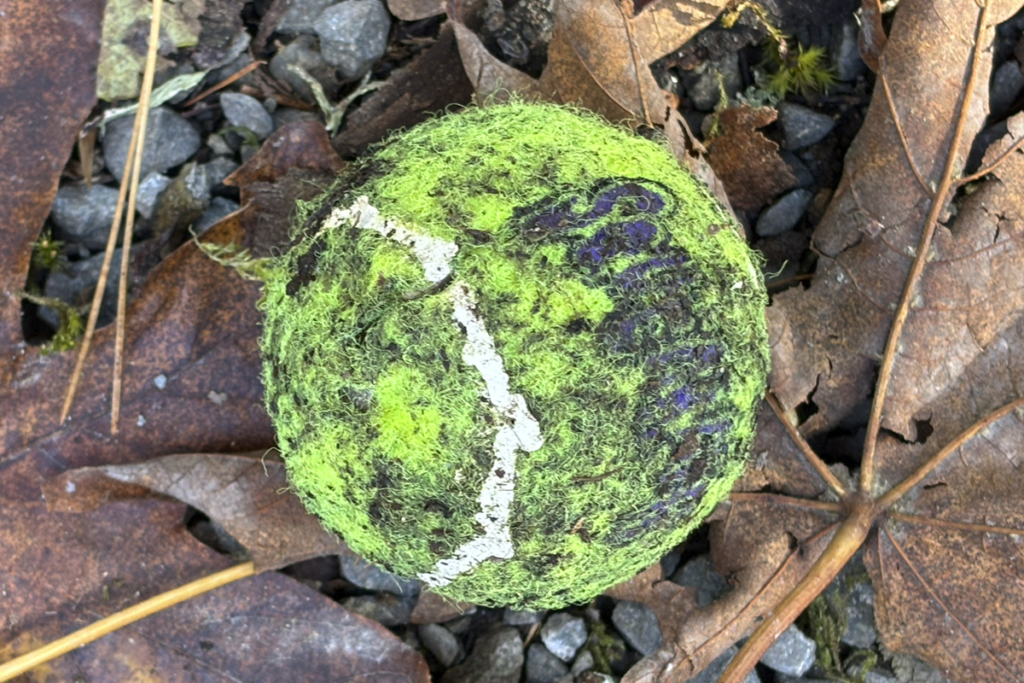*
EarthTalk®
From the Editors of E – The Environmental Magazine
Dear EarthTalk: I often find old tennis balls in a nearby park, likely lost by dog owners. What is the collective effect on ecosystems of all these tennis balls? — June Jackson, via email

Tennis balls, primarily made from rubber and synthetic materials, do not biodegrade and can persist in the environment for years. Made with a combination of rubber and felt, they contribute both litter and microplastics to our ecosystems.
Natural and synthetic rubber production is resource-intensive, often leading to deforestation and pollution in areas where rubber plantations are cultivated. The manufacturing process also consumes significant energy, and once discarded, tennis balls contribute to growing plastic waste in ecosystems. While some tennis ball recycling initiatives exist, such as efforts to repurpose used balls into playground surfaces or dog toys, the majority still end up in landfills or scattered in natural spaces.
Also, when left in nature, tennis balls can present hazards to wildlife. Animals may ingest pieces of these balls, mistaking them for food. The felt cover on tennis balls can shed fibers over time, especially in wet or harsh conditions, potentially releasing microplastics and other synthetic particles into the soil and waterways. Studies on synthetic materials in the environment have shown that these particles can disrupt soil health and are increasingly found in water systems, where they accumulate and impact marine life.
Fortunately, some manufacturers are developing more eco-friendly alternatives. Wilson Sporting Goods, for example, introduced the Triniti Ball, which is designed to last longer and comes in a recyclable, unpressurized paper container, a step toward reducing both waste and production impacts. However, these sustainable options are not yet widespread in dog toy collections, so responsible disposal and use are still crucial for pet owners who want to minimize their environmental footprint.
If you want to discard your dog’s old tennis balls responsibly—or you pick up others’ long forgotten ones left behind on walks—take them to a nearby tennis center that hosts a collection bin from RecycleBalls. This innovative company takes apart old tennis balls and repurposes their constituent parts into a wide variety of other applications.
While one or two tennis balls left behind might seem inconsequential, the cumulative impact is not. Retrieving and disposing of used tennis balls properly—or opting for eco-friendlier toys—can help reduce this environmental impact and keep natural spaces cleaner for everyone.
CONTACTS: The Environmental Challenges of Tennis Balls and Strings, https://tennisnerd.net/balls/the-environmental-challenges-of-tennis-balls-and-strings/32144.
EarthTalk® is produced by Roddy Scheer & Doug Moss for the 501(c)3 nonprofit EarthTalk. See more at https://emagazine.com. To donate, visit https://earthtalk.org. Send questions to: question@earthtalk.org.
Viewers are encouraged to subscribe and join the conversation for more insightful commentary and to support progressive messages. Together, we can populate the internet with progressive messages that represent the true aspirations of most Americans.